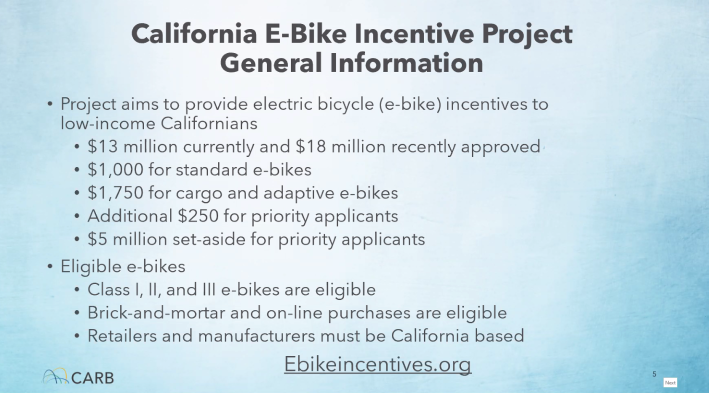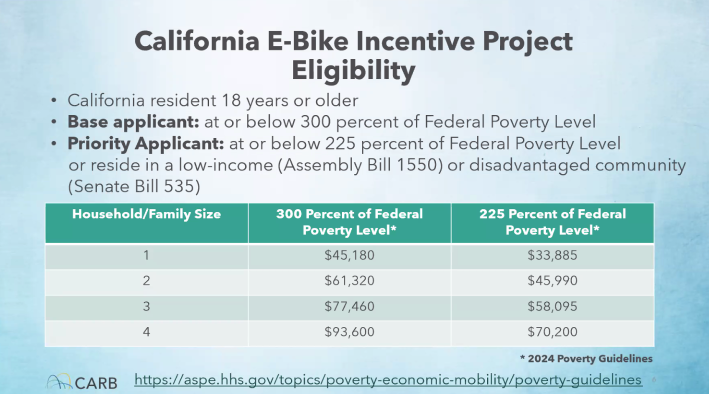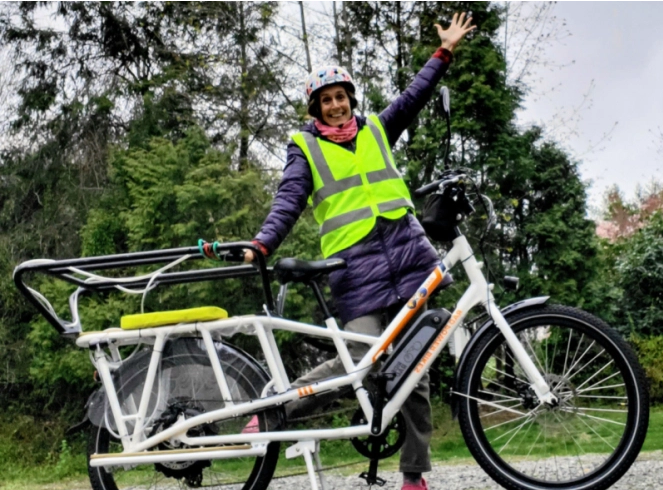For more than three years, the California Air Resources Board has been working to formulate and launch a statewide e-bike incentive program. Progress has been glacial, and answers to requests for information have been vague.
The team held a public workgroup today to update progress on the program, and there's not much to report. The official program launch is now "sometime in the second quarter of 2024," but it's hard to trust that information when the team has been promising to "launch soon" for more than a year.
The main purpose of today's meeting was to get feedback on a proposal to accept applications via multiple "application windows," rather than all at once with a single application deadline. The point would be to provide more opportunities for people to apply for the incentives, as well as "the opportunity to fine tune the project between application windows," according to CARB staff. There was no word on whether the fine-tuning would be an opportunity for CARB staff, for its contractor Pedal Ahead, or both.
Despite the many heart and thumbs-up emojis that floated past while team lead Shaun Ransom was explaining the question, only two of the people who were able to comment during the workshop's time frame responded to it.
It's hard to see how dividing application windows into two or three would help much, unless CARB staff just have no confidence in the outreach capabilities of Pedal Ahead - about which many questions have been raised - and they think that drawing out the program would somehow help advertise it. It seems obvious that having multiple, separate application windows would create confusion, cause a lot more work for the team combing through the applications, and further delay getting incentives into people's hands.
But some argue that the "controlled release" of several application windows could give people who are less computer savvy a better chance at getting one of the incentives.
But the main point is that the program needs to be launched, the sooner the better. Delays have already set the program back.

In the end, it is just not a lot of money for a statewide program - a total of $13 million to set up the program and get the first incentives out the door, with another $18 million approved and waiting in the wings. That comes to between 500 and 800 individual incentives for that first batch of funding, maybe 1500 for the total amount. It doesn't matter whether the applications are all collected at once or in three separate "windows" - either way they are likely to be snatched up quickly once the program finally launches.
While it's true that there have been a lot of details that need decisions, and a lot of differing points of view on some of the basic issues, like what kinds of bikes are eligible and whether online retailers should be included, the delay has gone on past any reasonable amount of time. There's certainly no need to reinvent the wheel on this subject - there are many existing local and regional bike incentive programs to learn from.
Get the incentives out there, learn whatever needs to be learned from errors and bottlenecks, and then build the program into something that can actually get people on e-bikes and out of cars.
Several callers questioned whether the program would allow incentives to be used for e-bikes that don't have UL-certified batteries, an area of concern in many cities when cheaper batteries catch fire while being charged. Ransom said the CARB team is "watching the UL issue closely," but has not made this a requirement for bikes in the program.
He said that a "very limited" number of bikes with UL-certified batteries are available - "less than five percent of the market," he said.
Callers disputed this. One pointed out that there are many bike models available with UL-certified batteries, even if the number of manufacturers is more limited. The issue is important not just to avoid fires, but to avoid supplying junk bikes that will become unusable within a short time frame.
At least the program's website, with information about how the incentives will work, who is eligible, and other requirements, has finally launched. People with comments or questions can contact ebikeincentives [at] arb.ca.gov, but if your question is "am I eligible?" check the website first.







